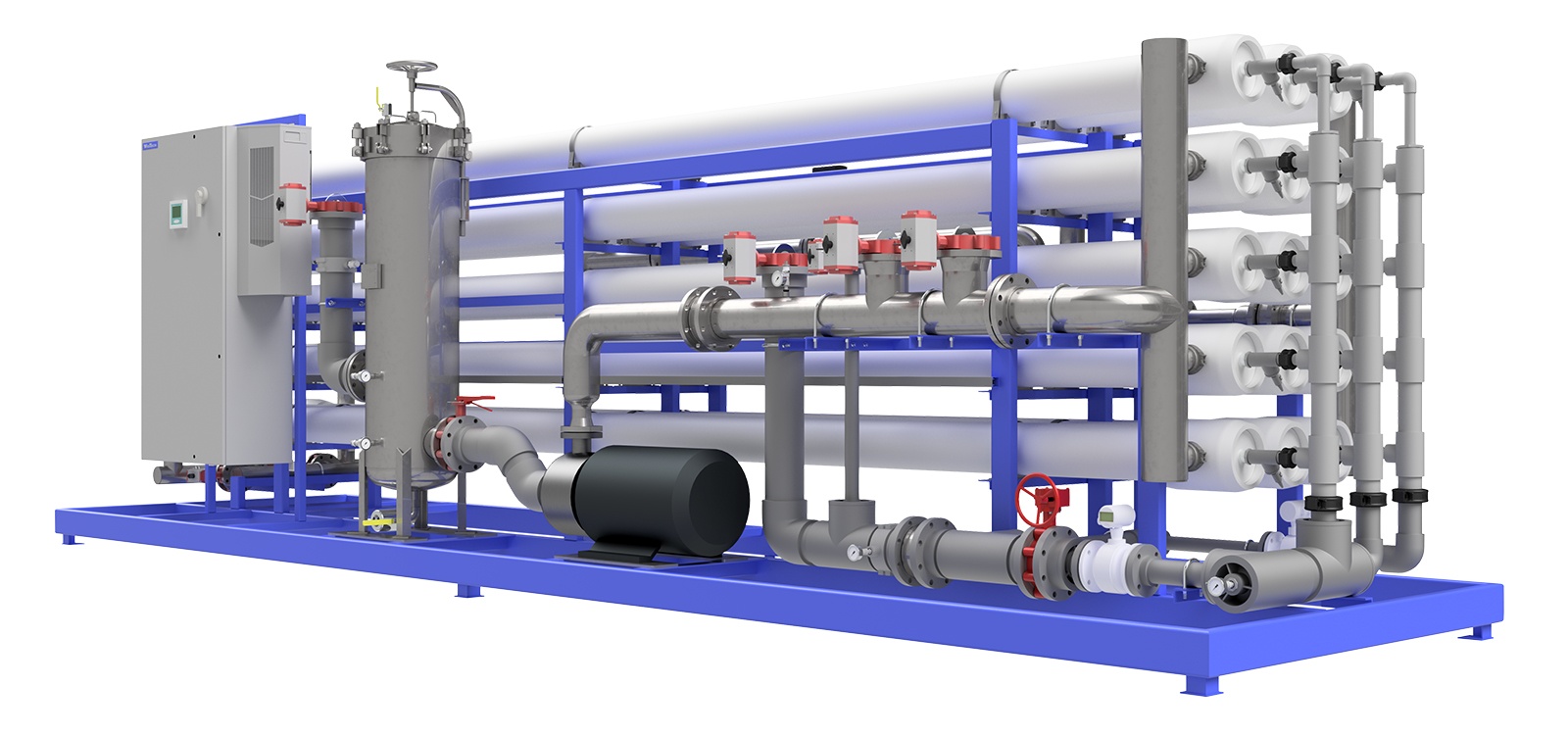

Reverse Osmosis
Reverse osmosis is a process that is used to remove a wide range of salts to give water of a high purity. Osmosis is a natural process involving fluid flow across a semi-permeable membrane barrier. It is the process by which nutrients feed the cells in our bodies and how water gets to leaves at the top of trees.
If you seperate a solution of salts from pure water using a basic thin semi-permeable membrane like a sausage skin, the pure water passes through the membrane and tries to dilute the salt solution. If the salt solution is connected to a vertical pipe then the progressively diluted solution will fill the pipe until the osmotic pressure drawing the pure water through the membrane is the same head pressure as the diluted solution.
This process can be reversed, hence ‘reverse osmosis’ – by applying a higher pressure to the salt solution. Pure water will then pass the other way through the membrane in a process that is easy to visualise as ‘filtration’ where the filter will only let through the small water molecules and retain almost all of the other molecules.
This means that water containing a high level of natual salts can be purified without the need for chemical regenerants such as the acid and alkali used in demin plants. Reverse osmosis is therefore considered a much safer route of producing pure water for many commercial and industrial applications, and additionally the plant doesn’t need to be taken out of service for regeneration as a demin plant does.
Rejection rates of salts from water is generally in the region of 95-99.5% dependant upon the membrane type used and the raw water feed quality. RO systems can be designed to utilise the wide range of membranes available, which will give different permeate water qualities. Standard designed RO’s are manufactured using the low energy membranes which will give a permeate water quality of approx 10 microsiemens from an input water of between 500-700 microsiemens.
